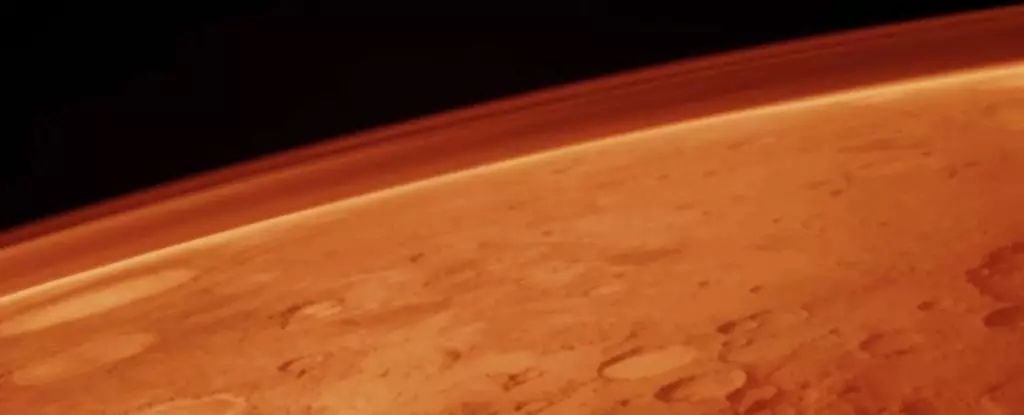The aspiration to make Mars a second home for humanity is a concept that captures the imagination of many. For decades, enthusiasts have envisioned a future where humans stroll across the Martian landscape, basking in the glow of a sun that once shone only on a desolate terrain. Yet, while these fantasies often make their way into popular culture and speculative fiction, the practicality of such endeavors reveals a daunting reality—particularly when we turn to the hard science involved in terraforming the Red Planet.
Several thinkers, such as Kim Stanley Robinson with his celebrated Mars Trilogy, romanticize the challenges of colonization and paint a vibrant picture of a transformed Mars. However, studies presented at scientific conferences, like the recent one by Leszek Czechowski of the Polish Academy of Sciences, shatter these visions with mathematical calculations and rooted analyses. Czechowski’s paper, “Energy problems of terraforming Mars,” starkly addresses the feasibility of altering Mars’s atmosphere to render it hospitable or even Earth-like.
Understanding Martian Physics
Before reaching the exciting territory of potential solutions, it is crucial to comprehend the unique challenges posed by Mars’s atmospheric conditions. Current research affirms that the thin atmosphere of Mars, which is only about 1% that of Earth’s, presents immediate complications for human survival. The boiling point of bodily fluids under Martian pressure dramatically dictates that any future Martian settlers would need sophisticated pressure suits to protect themselves upon arrival.
Czechowski’s remarks about water boiling at frigid temperatures illustrate the inhospitable environment that Mars currently presents. In fact, without significant alteration, the average human would face immediate peril. However, there are some regions, like Hellas Planitia, that possess slightly higher atmospheric pressure—yet still insufficient to allow for comfortable human habitation. This knowledge sets the stage for understanding why merely increasing atmospheric pressure is a monumental task requiring astronomical resources.
Materials for the Atmosphere: A Long-Distance Challenge
So, how do we achieve the transformation we dream of? Czechowski examines the immense volume of gases needed to boost Martian atmospheric pressure to levels where human survival could be conceivable. Initial proposals suggest acquiring materials from the nearby Kuiper Belt as a viable solution. This region is abundant in icy bodies, which could potentially be utilized to enrich Mars’s thin atmosphere.
However, there lies the rub—the sheer scale of this undertaking is nothing short of monumental. The suggestion that asteroids from the main belt might serve this purpose stumbles upon the ugly reality that they do not possess the right mix of atmospheric components—specifically, sufficient water and nitrogen—necessary for creating a breathable environment. The Oort Cloud, while packed with a variety of substances, presents its own challenges with logistic feasibility and time. Czechowski’s projections that it might take upwards of 15,000 years to transport such materials underscore the limitations of current technological capabilities.
The Catastrophic Solution
Interestingly, Czechowski approaches the potential solution with a dramatic flair—the idea of crashing icy bodies into Mars. This method, while speculative, fascinatingly integrates both resource acquisition and energy generation. The catastrophic impact would release not only the materials but also the necessary energy to warm the planet, theoretically pushing it toward a habitable atmosphere.
This ‘smash and grab’ strategy highlights the gulf between our ambitious dreams and the cold hard truth of planetary engineering. While the idea of using fusion reactors to power ion engines for such a monumental task excites the imagination, the absence of a concrete design further hammers home the difficulties we face in engineering terms. It is easy to romanticize the notion of terraforming, but as Czechowski indicates, it may take innovative technological breakthroughs just to conceive of feasible methods.
The Bright Side of Research
Despite the heavy limitations and staggering timeframes presented, it is crucial to recognize that studies like Czechowski’s serve as catalysts for conversations around terraforming Mars. They invite the scientific community to explore technological advancements in propulsion, material science, and bioengineering, enhancing our understanding of planetary atmospheres.
While some may find the concept of terraforming Mars overly ambitious, there is an undeniable magnetism in engaging with such challenges. History is replete with instances where human innovation has surpassed expectation, and perhaps one day, we will unlock the secrets required to make the Red Planet our new frontier. Be it through astronomical impacts or groundbreaking technological ingenuity, the dream of a thriving, terraformed Mars remains alive—an endeavor worth pursuing, even if we must wrestle with the gravity of the situation.


Leave a Reply